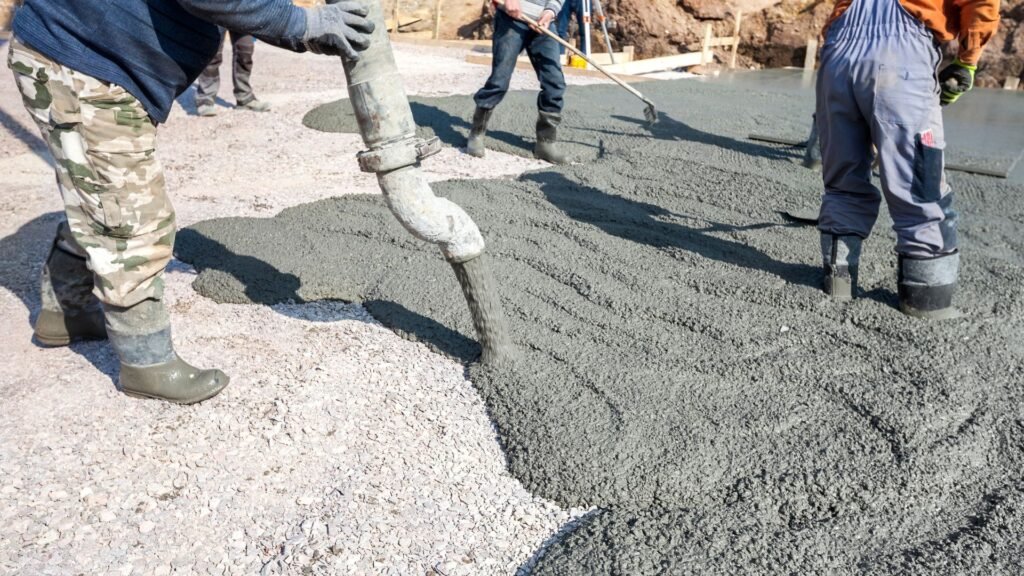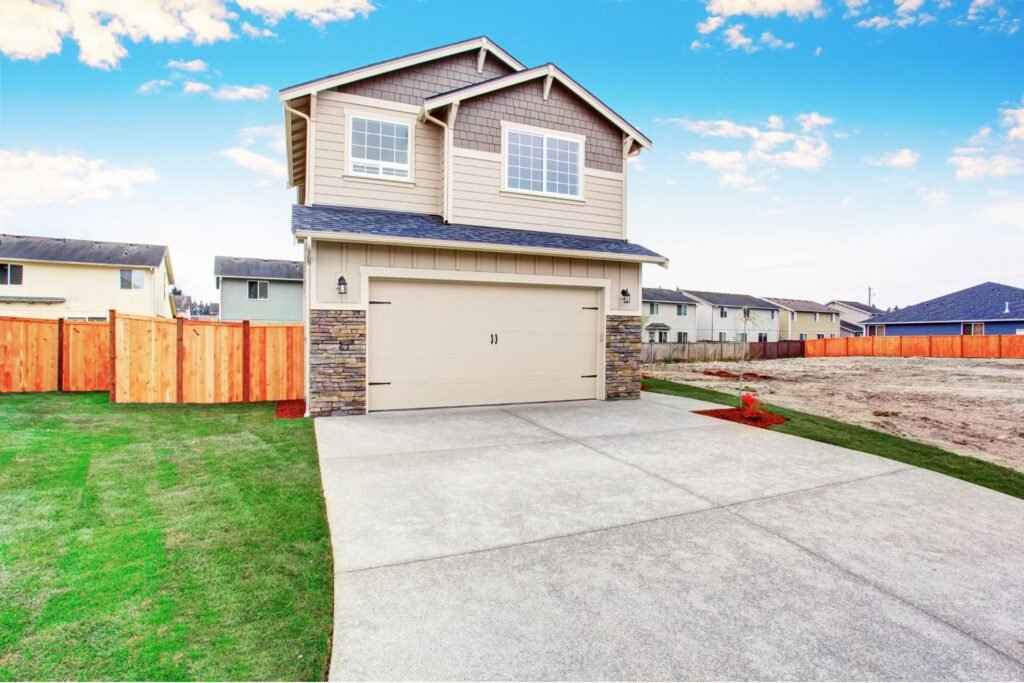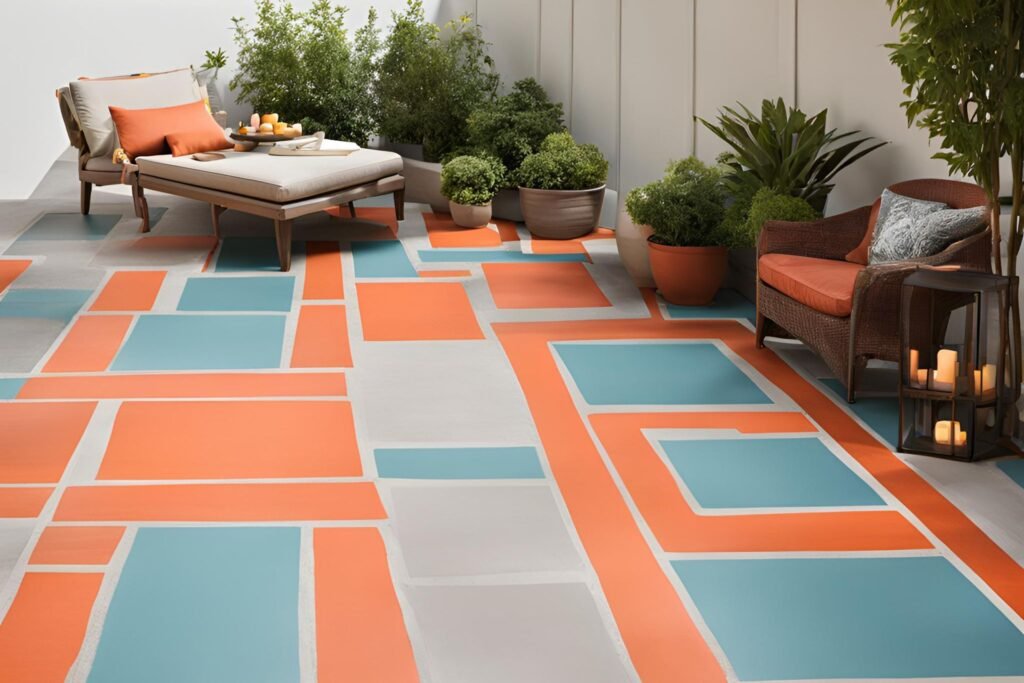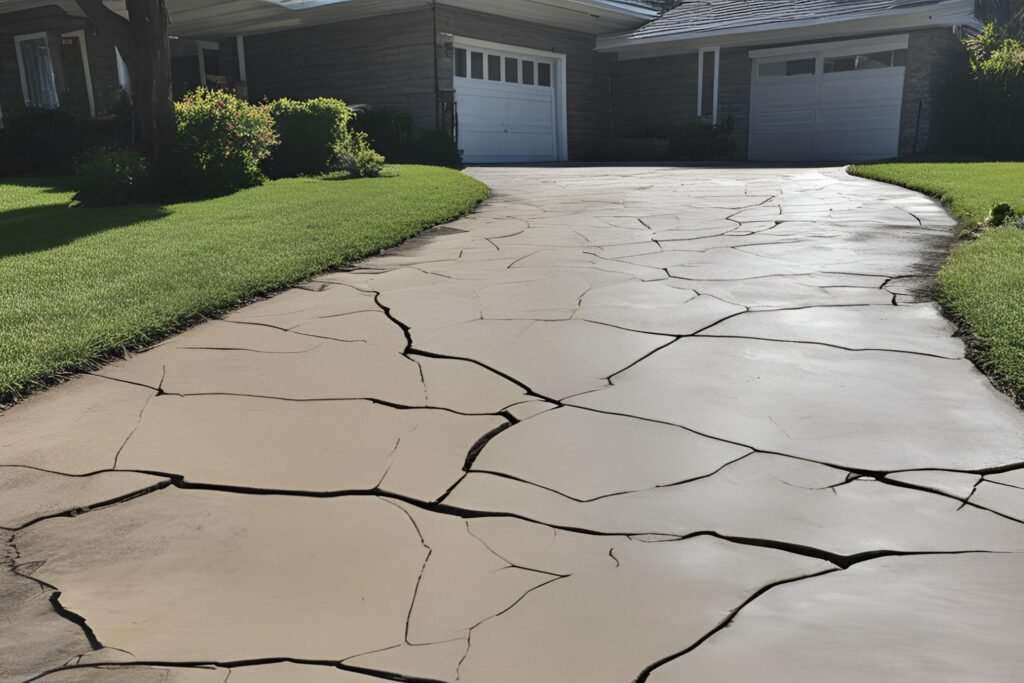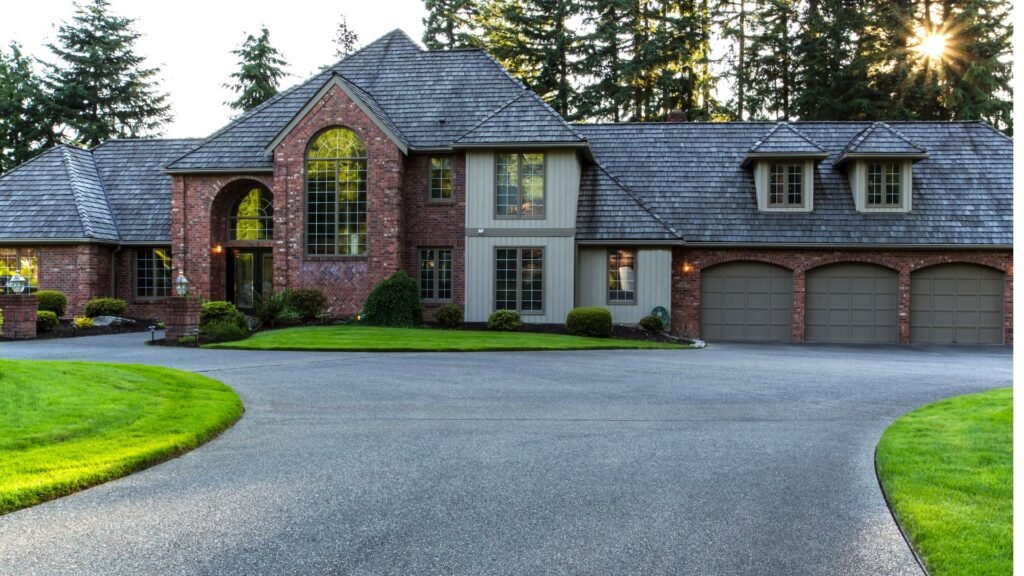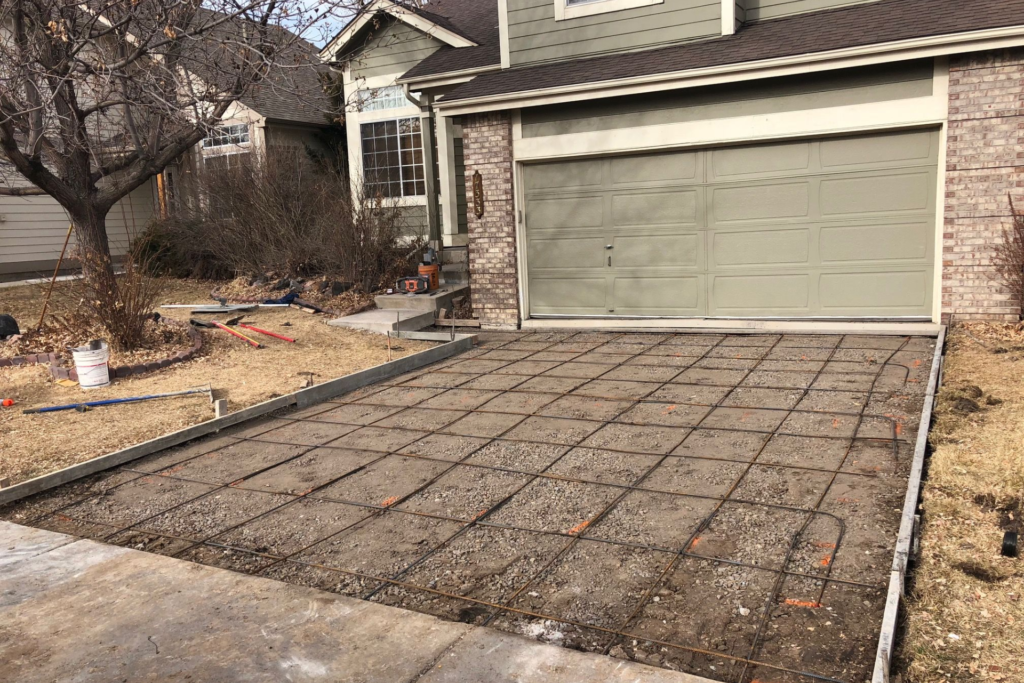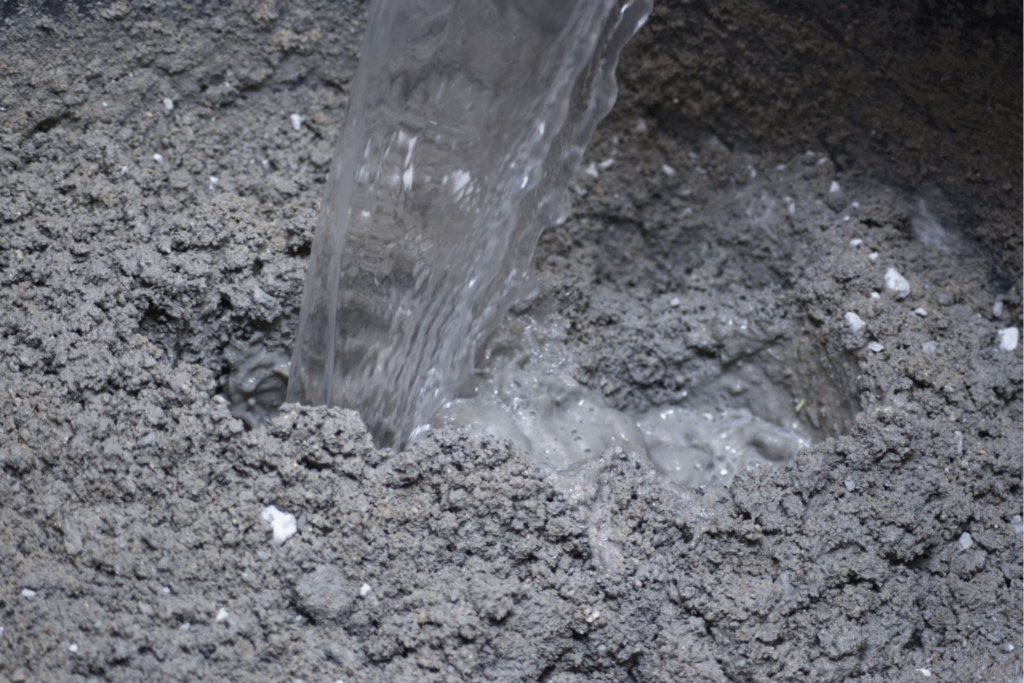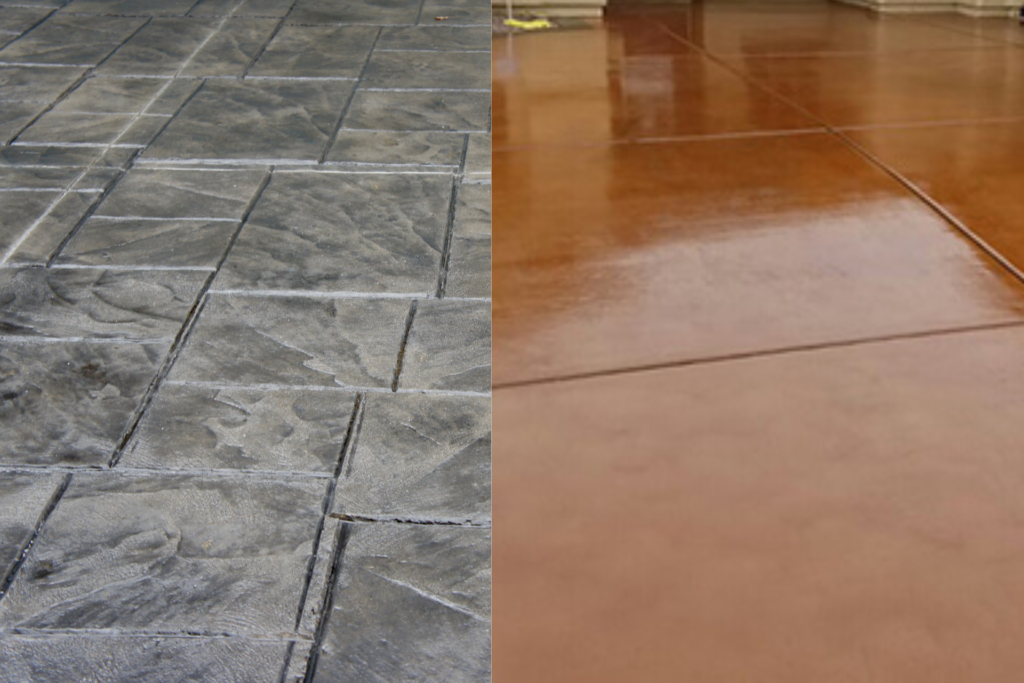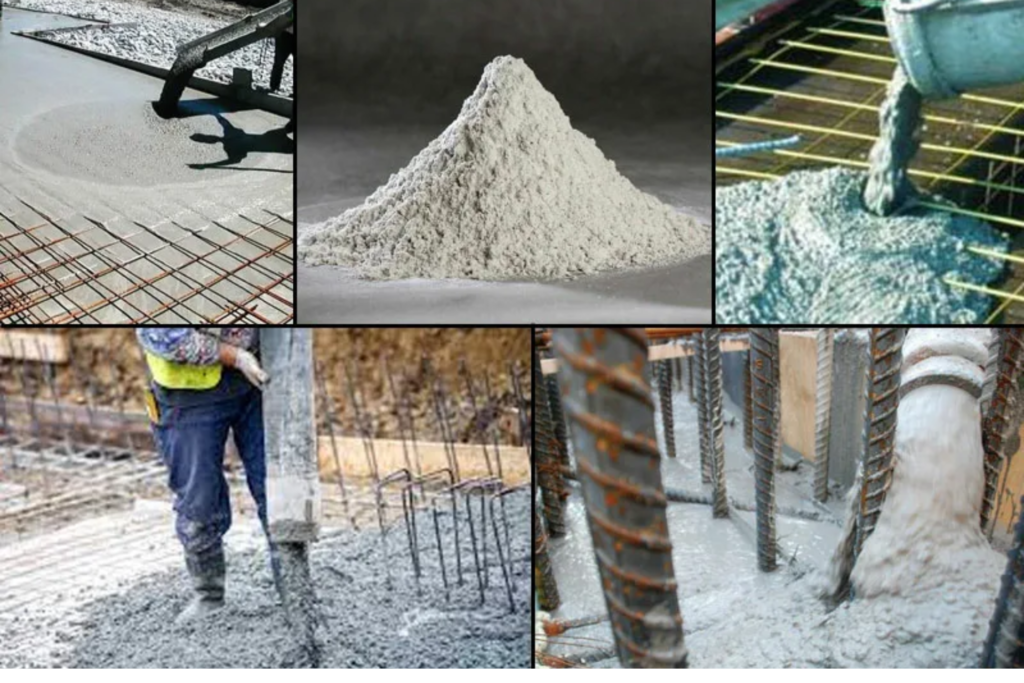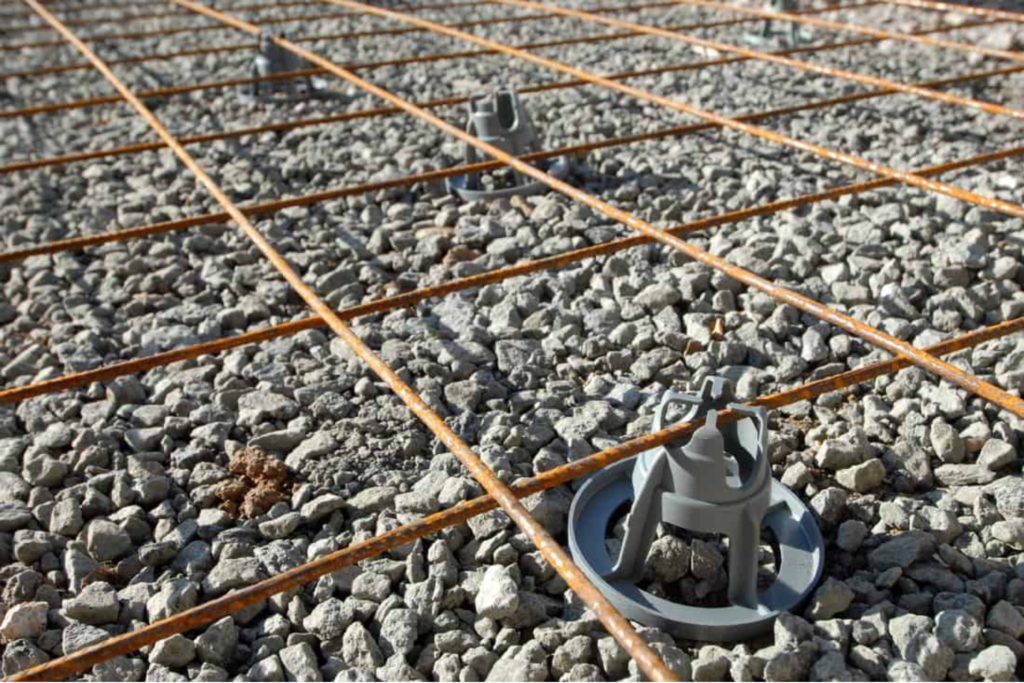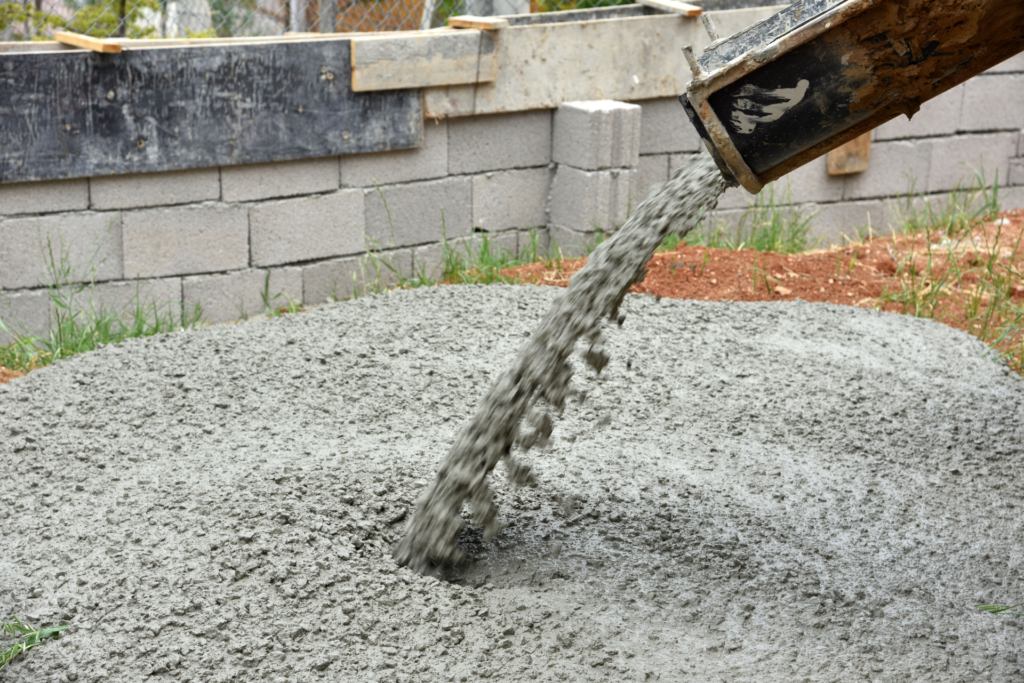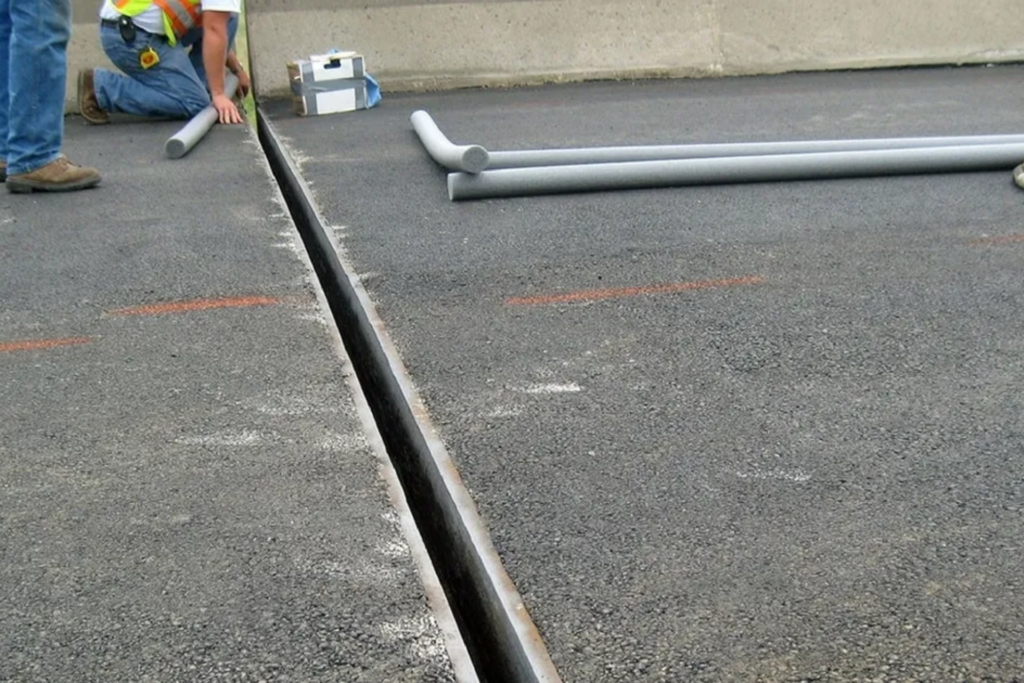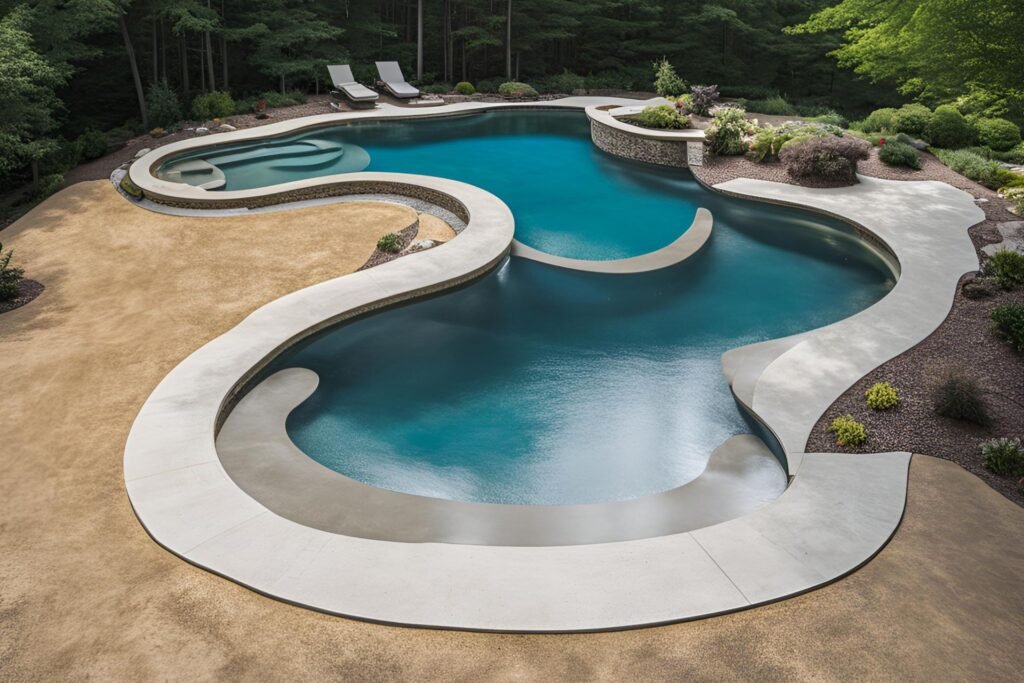Welcome to our comprehensive guide on whether you should cover concrete after pouring! If you’ve ever poured concrete for a driveway, patio, or foundation, you may have wondered what the next steps are to ensure a strong, long-lasting result. Proper curing is critical to the durability of concrete, and covering it after pouring plays a significant role in that process. In this article, we’ll dive into why covering concrete is often necessary, how it helps maintain moisture, and the best methods to ensure your project turns out as solid as possible. Let’s get started on understanding why this seemingly simple step can make all the difference in your concrete’s strength and longevity.
Covering concrete after pouring helps retain moisture during the curing process, which is crucial for achieving maximum strength and preventing cracks. It is recommended to cover concrete with materials like plastic sheeting, burlap, or curing blankets, especially in hot, cold, or windy weather conditions. Covering should be done as soon as the concrete starts to set to protect it from rapid evaporation, rain, or temperature fluctuations, ensuring a durable, long-lasting finish.
Table of Contents
Why Does Concrete Need To Cure Properly?
When it comes to concrete, proper curing is essential to ensure the material achieves its full strength, durability, and longevity. Whether you’re pouring a driveway, foundation, or walkway, understanding the curing process is crucial for long-lasting results.
Brief Overview of the Curing Process
Curing is the process by which concrete hardens and gains strength over time. It begins once the concrete is poured and continues for days, weeks, or even months, depending on the conditions. At the core of this process is a chemical reaction called hydration, which occurs when water reacts with the cement in the mix.
During hydration, water molecules combine with the cement, forming calcium silicate hydrate (CSH). This compound acts as the glue that binds the aggregate particles (sand, gravel, or crushed stone) together, making the concrete progressively harder. However, for this reaction to take place effectively, the concrete must retain enough moisture for an extended period. If it dries too quickly, the hydration process is incomplete, leading to weak and brittle concrete.
Importance of Proper Moisture Retention
For the hydration process to work optimally, maintaining proper moisture levels in the concrete is key. When moisture is lost too rapidly, typically due to exposure to sun, wind, or dry conditions, the hydration process is halted prematurely. This can leave the concrete underdeveloped and prone to defects.
Proper curing methods—such as covering the concrete with plastic sheeting, applying a curing compound, or keeping it damp with water—are essential to prevent rapid drying. These techniques ensure that the concrete retains the necessary moisture to fully hydrate, resulting in a strong, durable material that can withstand time and environmental pressures.
Consequences of Improper Curing
Improper curing can lead to several significant issues that compromise the concrete’s quality:
1. Cracks: When the surface of the concrete dries out faster than the internal layers, it creates tension, causing unsightly cracks. These cracks are not only visually unappealing but can also weaken the overall structure.
2. Reduced Strength: Without sufficient hydration, the concrete fails to develop its intended compressive strength, which can lead to structural failures or the need for costly repairs sooner than expected.
3. Surface Scaling: If the surface of the concrete dries too quickly, it can become flaky or scaly. This happens because the top layer weakens without proper moisture, making it more susceptible to erosion and weathering over time.
Real-Life Examples of Improper Curing
We’ve all seen concrete surfaces that crack, flake, or crumble prematurely. One common scenario is when a concrete driveway develops deep cracks within a few months of installation. Often, this is due to improper curing techniques, such as neglecting to cover the concrete or failing to apply a curing compound. These situations demonstrate just how important it is to manage the curing process carefully.
In another example, concrete steps or walkways may show signs of surface scaling in areas exposed to heavy weather conditions, like rain or snow. Improper curing in such cases allows moisture to penetrate the surface, causing scaling and degradation. These real-life examples highlight the vital role curing plays in ensuring concrete structures maintain their integrity and appearance for years to come.
In summary, curing concrete is not just a technical detail—it’s a critical step in the construction process that affects the strength, durability, and longevity of your project. Taking the time to cure your concrete properly can prevent a host of problems down the line, from surface damage to structural failures.
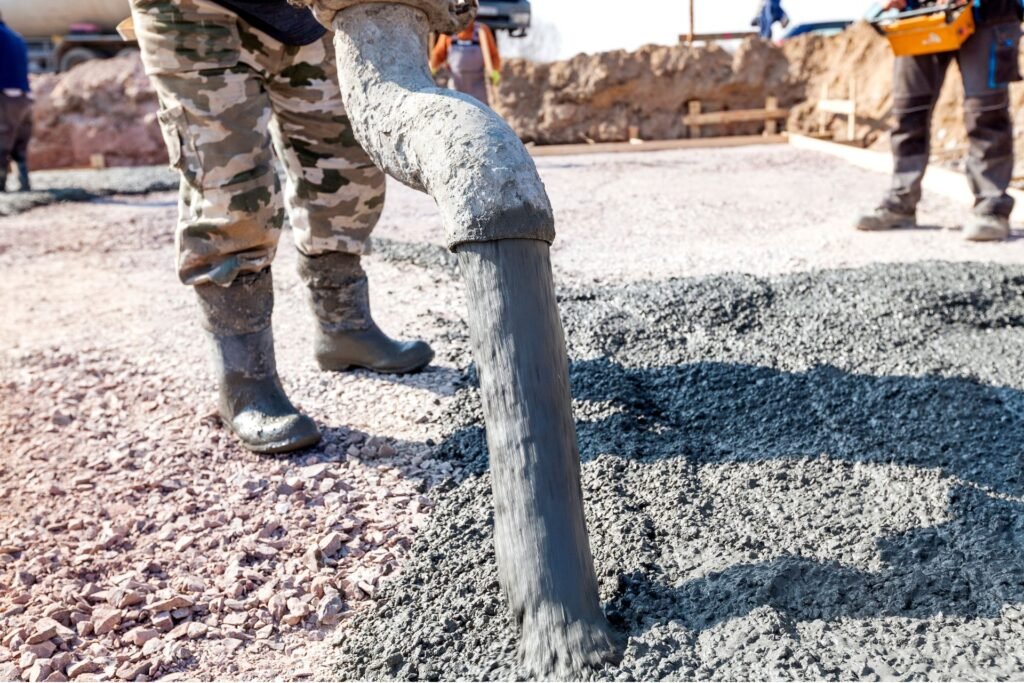
Should I Cover Concrete After Pouring?
The short answer is yes, covering freshly poured concrete is generally necessary to ensure proper curing. Whether you’re dealing with a driveway, foundation, or patio, taking this step can make a huge difference in the longevity and quality of your concrete. While it might seem like a minor detail, it plays a critical role in how your concrete sets and strengthens.
Why Is Covering Concrete Essential?
Covering concrete is crucial because it helps retain moisture during the curing process. Freshly poured concrete needs moisture to harden properly; otherwise, it can become brittle and prone to cracking. Covering the surface helps maintain the right moisture levels and shields it from environmental factors like direct sunlight, wind, and rain. These elements can disrupt the curing process by either causing the water in the concrete to evaporate too quickly or by damaging the surface.
- Sun Exposure: Excessive heat from direct sunlight can cause the top layer of the concrete to dry too quickly, leading to shrinkage cracks and a weaker structure overall.
- Wind: Strong winds can also dry out the surface prematurely, causing uneven curing and making the concrete vulnerable to cracking.
- Rain: On the flip side, rain during the curing process can wash away essential elements from the concrete mix, damaging the surface and affecting its final strength.
When Covering May Not Be Necessary
In some cases, covering concrete may not be required, such as when you’re working in a perfectly controlled environment or in mild, ideal weather conditions. For example, if temperatures are moderate, humidity levels are optimal, and there’s no chance of rain or strong winds, you might get away with not covering the concrete. However, these conditions are rare, and it’s always better to err on the side of caution.
What’s Next?
Now that you understand why covering concrete is so important, the next sections will dive into the specifics of when, how, and what to use when covering concrete after pouring. Whether you’re a DIY enthusiast or a contractor, knowing these details can help you achieve professional-grade results every time.
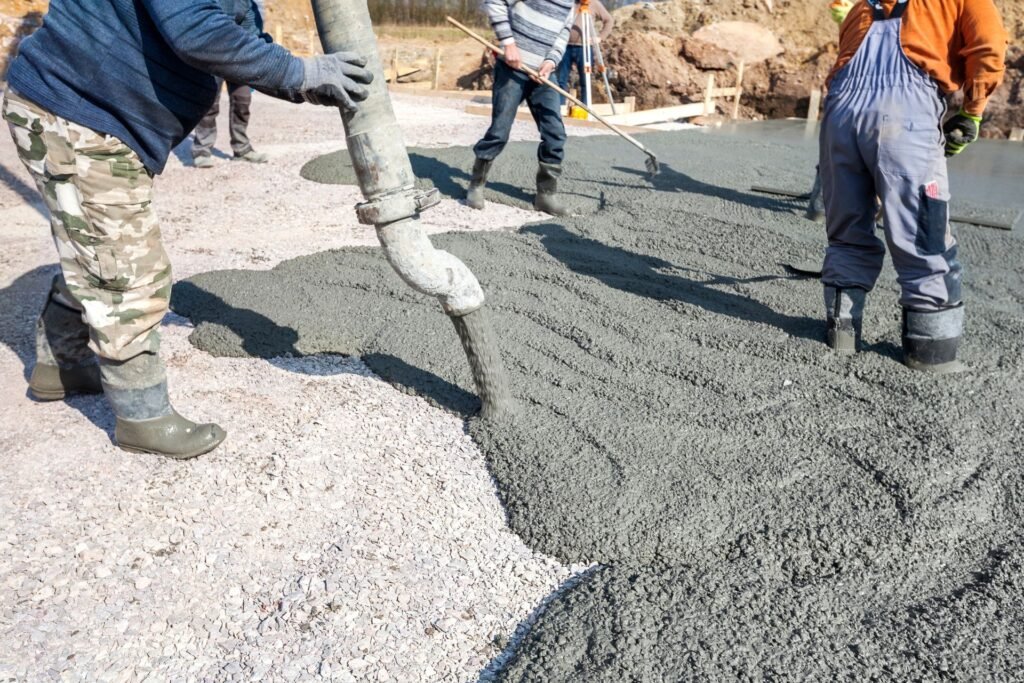
When Should You Cover Concrete?
Knowing the right time to cover your freshly poured concrete is essential for ensuring a strong, durable finish. Covering concrete at the appropriate stage protects it from external elements that can compromise its strength and appearance. Let’s dive into the ideal timing, weather considerations, and telltale signs that your concrete needs to be covered.
Ideal Timing for Covering Concrete
The best time to cover concrete is just after it starts to set but while it’s still moist. Typically, this occurs within the first few hours after pouring. The concrete should have begun the initial setting process, but it’s important that there’s still enough moisture present for the curing process. Covering concrete at this stage helps retain moisture, which is critical for proper curing, ensuring the material reaches its full strength and durability.
Seasonal Considerations for Covering Concrete
Different weather conditions can have a significant impact on the way concrete sets, so it’s essential to adjust your approach to covering based on the season and climate.
- Hot Weather: In hot weather, concrete can dry out too quickly due to rapid evaporation. When the surface loses moisture too fast, it can result in weaker concrete with surface cracks. Covering the concrete, typically with a moisture-retaining cover like plastic sheeting or damp burlap, slows down evaporation, giving the concrete enough time to properly hydrate and cure.
- Cold Weather: Concrete is particularly vulnerable to cold temperatures, especially when the thermometer drops close to freezing. In colder conditions, covering the concrete helps regulate its temperature, ensuring it doesn’t freeze, which could severely weaken the structure. Using insulated blankets or specialized curing covers in cold weather is critical to maintaining a stable curing environment. Without this protection, freezing can cause cracks or damage that diminishes the concrete’s overall integrity.
- Rainy or Windy Weather: Unexpected rain can cause water damage to the surface of the concrete, disrupting the smooth finish and potentially causing erosion on the surface. Similarly, strong winds can lead to rapid drying, uneven curing, or the deposition of dust and debris onto the wet concrete. In both scenarios, covering the concrete provides a protective barrier that shields it from these environmental elements, preserving the quality of the surface.
Signs Your Concrete Needs Covering
Knowing when to cover your concrete isn’t just about timing or weather—it’s also about paying attention to the concrete itself. There are several visual indicators that suggest your concrete may need covering:
- Crusting: If the top layer of the concrete starts to harden too quickly while the bottom remains soft, a phenomenon known as “crusting” can occur. This is often a sign that the surface is losing moisture too rapidly, especially in windy or hot conditions.
- Surface Cracks: Small cracks appearing on the surface shortly after pouring is another indicator that the concrete is drying too fast. Covering it at this point can help retain moisture and prevent further cracking.
- Rapid Drying: If you notice the concrete drying at an accelerated rate, especially in sunny or windy conditions, it’s essential to cover it immediately. Rapid drying can result in an under-hydrated mix, leading to reduced strength and durability over time.
By monitoring these signs and reacting swiftly, you can prevent common issues that arise from premature drying or exposure to harsh weather, ensuring your concrete project reaches its maximum potential.
In summary, covering your concrete is a crucial step in the curing process, especially when dealing with extreme weather or visible signs of rapid drying. Properly timing this action and using appropriate covering materials helps ensure a long-lasting, durable finish for your concrete project.

How To Cover Concrete After Pouring (Step-By-Step Guide)
Covering concrete after pouring is a critical step in ensuring a strong, durable surface. Whether you’re a seasoned contractor or a DIY enthusiast, following these steps will help you properly cure your concrete, protect it from environmental factors, and ultimately increase its longevity. Let’s walk through each step in detail, so you can achieve the best results.
Step 1: Wait for the Initial Set
One of the most important aspects of covering freshly poured concrete is to allow it to reach its “initial set.” This means giving the concrete enough time to stiffen slightly but not completely harden. Typically, this takes a few hours depending on the weather and mix. The reason for this wait is crucial: covering the concrete too early can disrupt the surface, leading to imperfections such as uneven textures or weak spots. You want the surface to be firm enough to withstand the covering without being disturbed.
In hot weather, the initial set happens faster, so keep an eye on the surface. Once the concrete can withstand a light touch without deformation, you’re ready to cover.
Step 2: Choose the Right Covering Material
Choosing the appropriate covering material is key to retaining moisture and protecting your concrete. Each option has unique benefits, depending on weather conditions and the size of the pour.
- Plastic Sheeting: Plastic is highly effective at retaining moisture, a key factor in proper curing. However, direct contact with the surface can lead to discoloration or marks. To avoid this, use spacers or ensure the plastic is slightly elevated off the surface. This method works best for small areas or specific patches.
- Burlap: A traditional favorite, burlap is excellent for retaining moisture, especially when soaked in water before application. Lay the wet burlap over the surface, and it will hold moisture for longer periods, aiding in the curing process. This is particularly useful in warmer climates where rapid evaporation could be a concern.
- Curing Blankets: Designed specifically for concrete curing, these insulated blankets are perfect for colder weather conditions. They help maintain a steady temperature during the curing process, ensuring that the concrete doesn’t freeze or cool too quickly, which could weaken the structure.
- Wooden Boards or Straw: For large outdoor pours, especially in rural settings, wooden boards or straw are often used. These materials are typically paired with other coverings like burlap or plastic to add an extra layer of protection and insulation. They are particularly useful in protecting the concrete from wind and other outdoor elements.
Step 3: Secure the Covering
Once you’ve selected your covering material, it’s important to ensure that it’s securely in place. Wind and other weather conditions can shift coverings, exposing the concrete to the elements and hindering the curing process. To prevent this, use weights like bricks or stones to hold down the edges, especially when working with lightweight materials such as plastic or burlap.
Additionally, ensure the covering isn’t too tight against the surface, as this can restrict air flow and cause uneven curing. For larger pours, you might need to overlap sheets and secure them well, ensuring complete coverage.
Step 4: Monitor the Covering
Concrete curing is not a set-it-and-forget-it process. You’ll need to monitor the covering, particularly in extreme weather conditions. In hot or dry climates, moisture can evaporate quickly, even under a covering. Check the surface regularly to ensure that it remains damp, and if necessary, mist the concrete with water or re-soak burlap coverings to maintain the correct moisture levels.
In cold weather, you’ll want to monitor the temperature under curing blankets to ensure it stays within the optimal range. Avoid allowing the concrete to freeze, as this can cause cracking or reduce overall strength.
Step 5: Removal Timing
Timing is everything when it comes to removing the covering. Removing it too early can expose the concrete to rapid drying, leading to cracking or surface damage. Typically, coverings can be removed after a few days to a week, depending on the weather conditions and the type of concrete used. For colder weather or larger pours, you may need to leave the covering in place for a longer period, sometimes several weeks.
When you’re ready to remove the covering, do so gently to avoid disturbing the surface. Start by peeling back one corner to check the condition of the concrete. If it still feels soft or is visibly wet, leave the covering in place for a bit longer. Once the concrete has cured to a suitable hardness, you can safely remove the covering entirely.
By carefully following these steps, you can ensure your concrete is properly cured, resulting in a strong and long-lasting surface. The right timing, material selection, and regular monitoring all play essential roles in this process. Whether you’re working in a hot, dry climate or dealing with cold weather, understanding how to cover concrete after pouring will help you achieve the best possible results for your project.
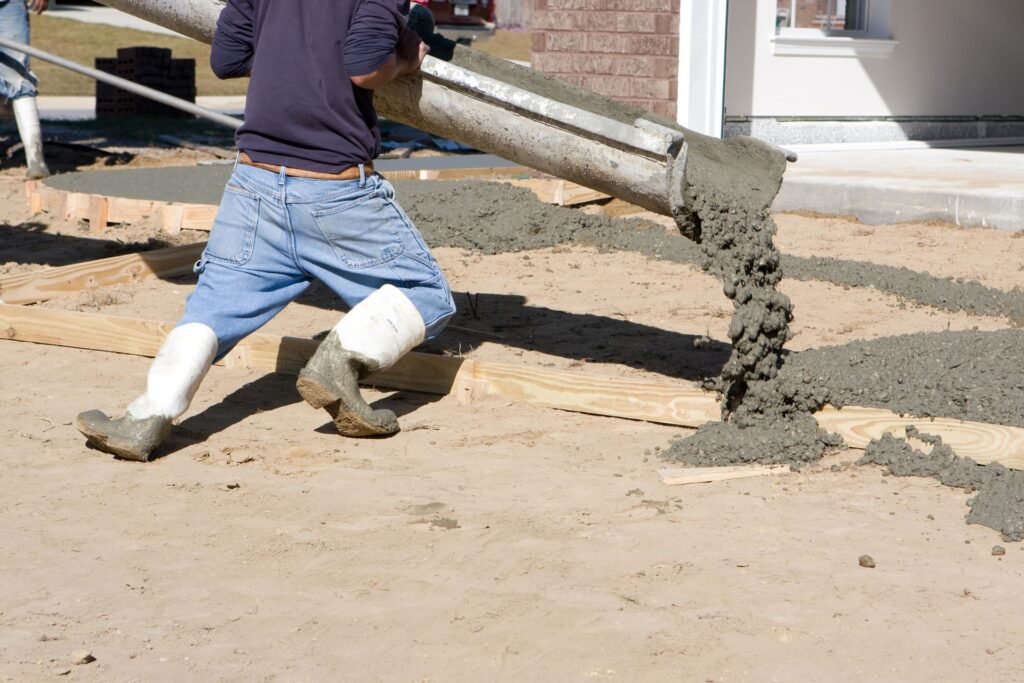
Common Mistakes To Avoid When Covering Concrete
When it comes to covering concrete, there are some key mistakes that can compromise the strength, durability, and appearance of the finished product. Proper curing is crucial, so avoiding these common errors can make all the difference. Here’s a breakdown of what to watch out for:
1. Covering Too Late
One of the most frequent errors is waiting too long before covering the concrete. If you delay, the surface of the concrete can begin to dry out, which may cause cracking. Surface drying happens when the moisture needed for proper curing evaporates too quickly, leaving the top layer weak and prone to damage. To prevent this, it’s important to cover the concrete as soon as it reaches initial set (the point where it’s hard enough to not be disturbed by the covering but still contains sufficient moisture). Timing is everything when it comes to maintaining the ideal curing conditions.
2. Using the Wrong Material for Covering
Choosing the right covering material is just as important as the timing. One common mistake is using plastic directly on the concrete surface. While plastic can help trap moisture, if placed directly on the concrete, it can cause problems such as discoloration or leave unsightly marks. These blemishes occur because plastic can create an uneven moisture distribution, leading to blotchy patches or even weakening certain areas of the concrete. Instead, consider using breathable materials like burlap or a proper curing compound that allows for even moisture retention without compromising the surface finish.
3. Removing the Cover Too Early
Another mistake is taking the cover off too soon. Proper curing requires maintaining a stable environment for the concrete to hydrate and strengthen fully. If the covering is removed prematurely, the curing process is disrupted, and the concrete may develop weak spots. These areas are more vulnerable to cracking, scaling, or other forms of deterioration. To avoid this, ensure the concrete is fully cured before removing any protective coverings—this generally takes several days, depending on weather conditions and the specific mix used.
4. Not Checking the Weather
Weather plays a significant role in how and when you should cover your concrete. Not paying attention to the forecast is a critical mistake that can lead to issues like freezing in cold conditions or excessive evaporation in hot, dry climates. If rain or extreme temperatures are on the horizon, you’ll need to adjust your plan to ensure the concrete is adequately protected. For instance, during high heat, covering concrete can help retain moisture, while in cooler weather, blankets or insulation might be necessary to protect the surface from freezing.
By avoiding these common mistakes, you can ensure a stronger, more durable concrete surface that stands the test of time. Proper curing not only improves the strength of the concrete but also enhances its overall appearance, making it less susceptible to future damage.

Do You Always Need To Cover Concrete?
When it comes to pouring and curing concrete, the need for covering often depends on various factors like environmental conditions, the type of project, and the methods used. While covering concrete is a common practice to ensure proper curing and strength development, there are situations where it may not be absolutely necessary.
When Covering is Optional
In certain conditions, covering concrete isn’t always required. For instance, if you’re working in mild weather with temperatures that aren’t too hot, cold, or windy, the concrete may cure properly without needing additional protection. The risk of moisture evaporating too quickly is lower in these circumstances, making covering less critical.
Similarly, for indoor pours, where the concrete is shielded from direct sunlight and extreme weather, covering may not be as essential. These controlled environments typically allow the concrete to retain moisture naturally, ensuring an even and gradual cure.
Another situation where covering may be optional is when chemical curing agents are applied. These specialized compounds create a thin, protective layer on the concrete surface, preventing water from evaporating too quickly. In such cases, you can forego traditional covers while still achieving a strong, well-cured slab.
Alternative Curing Methods
If covering isn’t ideal or necessary, there are alternative methods to ensure proper concrete curing. These methods focus on maintaining the right moisture levels, which is key for concrete to achieve maximum strength.
Curing Compounds
A popular alternative to physical covers is using curing compounds. These compounds are sprayed or applied onto the concrete surface immediately after the finishing process. By forming a moisture-retaining barrier, curing compounds help slow down water evaporation and allow the concrete to cure evenly. They are particularly useful in larger projects where it may be impractical to cover vast areas with traditional methods like plastic sheets.
Sprinkling Water
In some cases, you can maintain the moisture content of the concrete by sprinkling water on its surface. This method, however, should be done with caution—over-watering can lead to issues like surface cracking. The goal is to keep the surface moist, but not saturated, throughout the curing period. This approach is often used for smaller DIY projects or in situations where covering isn’t feasible.
Fogging
For industrial or larger-scale projects, fogging can be an effective method. Fogging involves misting the air around the concrete to maintain high humidity levels, thereby reducing evaporation without physically covering the surface. This method is particularly useful in large, open spaces like bridges or airport runways, where conventional coverings might not be practical.
Professional vs. DIY
A key question that often arises is whether homeowners should always follow professional recommendations when it comes to covering and curing concrete, or if there are DIY-friendly approaches they can rely on. While professionals typically advocate for the use of covers or curing agents in most situations to ensure optimal results, small-scale DIY projects may not always require such stringent measures.
For example, if you’re pouring a small patio slab during mild weather, simple methods like occasional water sprinkling may suffice. However, for larger projects, it’s always advisable to consult with or follow professional guidelines. Incorrect curing techniques can lead to issues such as surface cracks, uneven strength development, or even failure over time.
In conclusion, whether or not you need to cover concrete depends largely on the project and environmental conditions. While covering is generally a good practice, there are effective alternatives like curing compounds, sprinkling water, or fogging that can ensure your concrete cures properly without the need for physical covers. For DIYers, it’s important to weigh the complexity of the project and follow professional advice when necessary to avoid compromising the quality and durability of your concrete.

FAQs: About Should I Cover Concrete After Pouring
How long should I keep concrete covered after pouring?
Concrete should typically be kept covered for at least 24-48 hours, but the exact time depends on weather conditions and the concrete mix. For optimal strength, many professionals recommend covering concrete for up to 7 days to ensure proper curing.
What happens if it rains right after I pour concrete?
Rain can damage the surface of freshly poured concrete if it hits before the concrete has set. If rain is expected, cover the concrete with plastic sheeting or a tarp as soon as possible to protect the surface from washing out or developing weak spots.
Can I walk on or drive over covered concrete?
It’s best to avoid walking or driving over covered concrete for at least 24-48 hours. Even though the surface may seem dry, the concrete is still curing underneath and can be damaged by excess pressure. Wait until the concrete has cured enough to handle weight before driving or walking on it.
What should I do if my concrete is drying too fast?
If concrete is drying too quickly, especially in hot weather, you should cover it with a damp burlap or apply a curing compound to slow the evaporation of moisture. Rapid drying can cause surface cracks and reduce overall strength.
Can covering concrete cause discoloration?
Yes, covering concrete with plastic sheeting that touches the surface directly can sometimes lead to discoloration, often leaving light spots where the plastic was in contact. To avoid this, place the plastic slightly above the surface or use a more breathable covering like damp burlap.
Do I always need to cover concrete after pouring?
Covering concrete is not always necessary, especially if you’re pouring in mild weather with consistent moisture. However, it is highly recommended in extreme weather conditions, such as very hot, cold, or windy environments, to ensure proper curing.
Can I use water instead of covering concrete?
Yes, keeping the concrete surface moist by lightly sprinkling it with water or using a hose mist can be an alternative to covering. However, this method requires frequent attention to ensure the surface doesn’t dry out. Covering is generally more efficient for retaining moisture over a long period.
What type of material should I use to cover concrete?
Common materials used to cover concrete include plastic sheeting, damp burlap, or curing blankets. Plastic helps trap moisture but should not touch the surface directly. Burlap is breathable and can be soaked in water to provide moisture, while curing blankets are often used in colder weather to maintain temperature.
What is the best method to secure the covering over concrete?
To secure coverings like plastic sheeting or burlap, use weights like bricks or boards around the edges to keep them in place. Ensure the covering is not in direct contact with the surface to avoid imprints or discoloration and monitor it periodically to ensure it remains secure.
How do I know when it’s safe to remove the covering from concrete?
It is safe to remove the covering once the concrete has achieved enough strength to resist surface damage, usually after 3-7 days. Check the weather and follow the curing guidelines provided by your concrete supplier for the best results.
Conclusion
In conclusion, it’s crucial to understand the significant benefits of covering concrete during the curing process, as it plays a key role in enhancing its strength and durability. By protecting the surface, you can prevent common issues like cracking and ensure the long-term integrity of your project. Depending on factors such as weather and location, selecting the right covering method is essential. Whether you’re working in extreme temperatures or wet conditions, taking the time to evaluate your project’s specific needs can make all the difference. A little extra attention during the curing phase can save you both time and money by avoiding potential problems down the road.
About the Author:
Mike Veail is a recognized digital marketing expert with over 6 years of experience in helping tradespeople and small businesses thrive online. A former quantity surveyor, Mike combines deep industry knowledge with hands-on expertise in SEO and Google Ads. His marketing strategies are tailored to the specific needs of the trades sector, helping businesses increase visibility and generate more leads through proven, ethical methods.
Mike has successfully partnered with numerous companies, establishing a track record of delivering measurable results. His work has been featured across various platforms that showcase his expertise in lead generation and online marketing for the trades sector.
Learn more about Mike's experience and services at https://theleadguy.online or follow him on social media:


